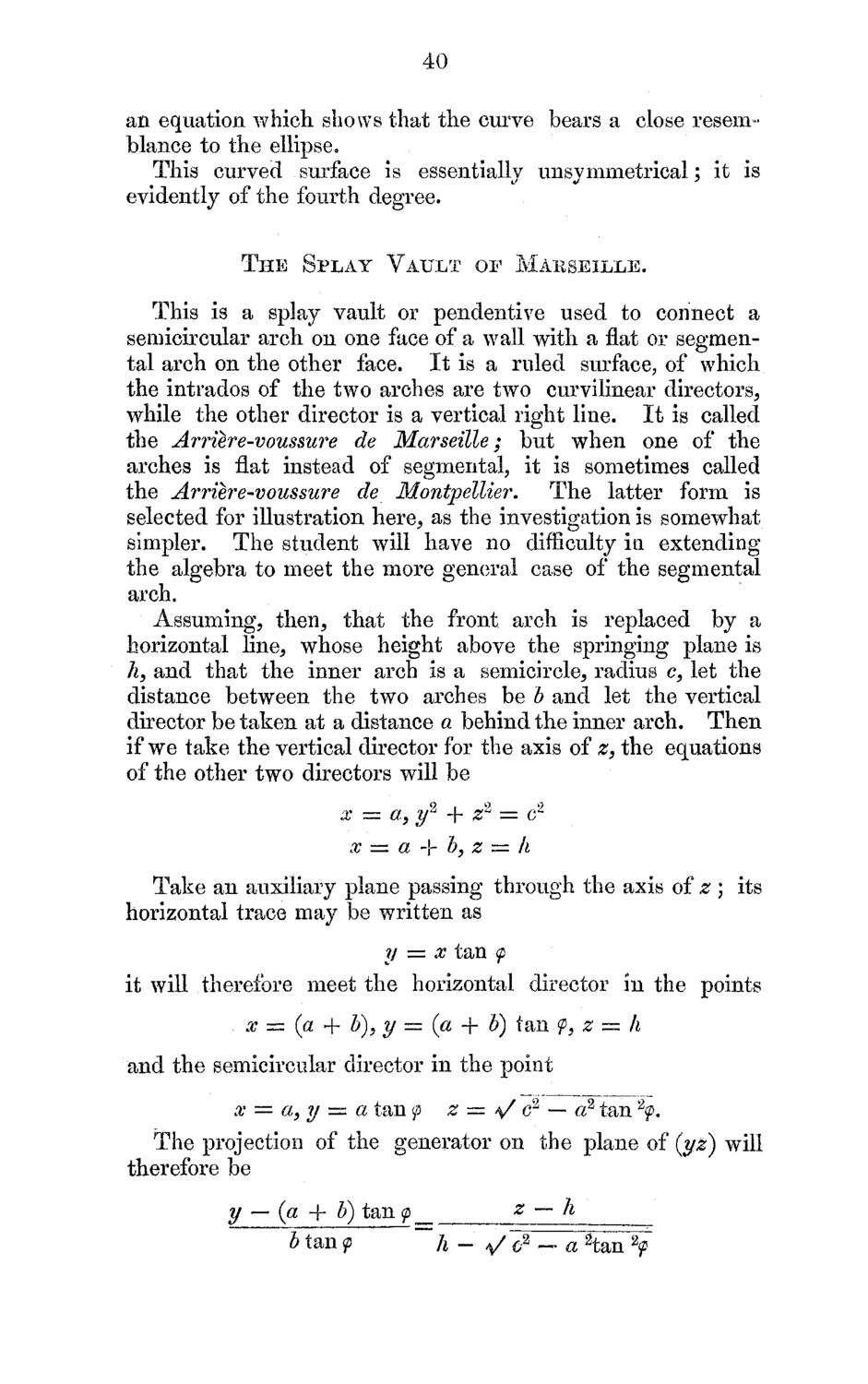| |
| |
Caption: Mathematical Models Catalog of a Collection of Models of Ruled Surfaces
This is a reduced-resolution page image for fast online browsing.

EXTRACTED TEXT FROM PAGE:
40 ail equation which shows that the curve bears a close resemblance to the ellipse. This curved surface is essentially unsymmetrical; it is evidently of the fourth degree. The Splay Vault of Marseille. This is a splay vault or pendentive used to connect a semicircular arch on one face of a wall with aflator segmental arch on the other face. It is a ruled surface, of which the intrados of the two arches are two curvilinear directors, while the other director is a vertical right line. It is called the Arriere-voussure de Marseille; but w h e n one of the arches is flat instead of segmental, it is sometimes called the Arriere-voussure de Montpellier. T h e latter form is selected for illustration here, as the investigation is somewhat simpler. T h e student will have no difficulty in extending the algebra to meet the more general case of the segmental arch. Assuming, then, that the front arch is replaced by a horizontal line, whose height above the springing plane is hy and that the inner arch is a semicircle, radius c, let the distance between the two arches be b and let the vertical director be taken at a distance a behind the inner arch. T h e n if w e take the vertical director for the axis of z, the equations of the other two directors will be x = a, y2 + z2 = cA x = a -h b, z — h Take an auxiliary plane passing through the axis of z ; its horizontal trace m a y be written as y = x tan -<p it will therefore meet the horizontal director in the points x = (a + b), y = (a + b) tan<p, z = h and the semicircular director in the point x = a, y = a tan <p z = a/ g2 — a2 tan *<p. T h e projection of the generator on the plane of (yz) will therefore be y — (a + b) tan <p z — h b tan < p ~~h - ,/ 62 — a 2tan 2p <
| |